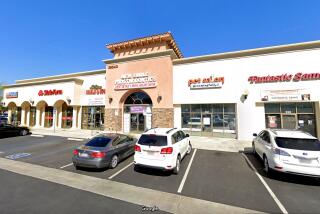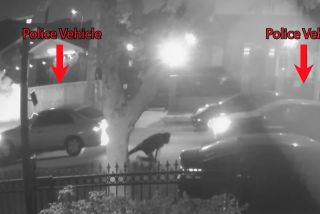South Carolina police shooting defense: What the video doesn’t show
- Share via
The video appears to be damning: a white police officer fatally shooting a black man in the back as he ran away.
The shooting of Walter Scott by North Charleston, S.C., police Officer Michael Thomas Slager has generated national outrage. Slager has been fired and charged with murder.
------------
For the record
April 8, 1:40 p.m.: An earlier version of the post misspelled Slager’s last name as Stager.
------------
Legal and police tactics experts said the video would be powerful evidence in the criminal case. But they say it still leaves Slager’s defense with options.
One likely defense focus will be what is not on the video. The interaction between Scott and Slager before the shooting is not seen, nor is the traffic stop that began the incident. Defense attorneys will probably push on this, the experts said, telling jurors that the video doesn’t tell the whole story.
“What was the conversation and interaction between the officer and the subject?” said retired Los Angeles police Capt. Greg Meyer. “Why did the subject run away?”
Still, Meyer said that tactic can only go so far.
“On its face the video causes great concerns about the use of deadly force in this case,” said Meyer, who appeared as a defense witness in the fatal shooting of Oscar Grant by a transit officer at an Oakland station.
Others agreed, saying one reason the video is so powerful is that it clearly shows the shooting itself.
“There is no doubt what happens on the video. I see an officer, and I see a suspect running and then getting shot in the back multiple times a good distance away. Then I see the officer advance and eventually handcuff the man,” said Ed Obayashi, an attorney and sheriff’s deputy in Northern California who is a use-of-force expert.
“Every frame of this video is going to be analyzed,” he said. “But so is everything before the video, and that is what is going to be the officer’s justification and his defense.”
To get a conviction, prosecutors must prove beyond a reasonable doubt that Slager committed murder. Legal experts say juries tend to give police officers the benefit of the doubt.
“The question is what would a reasonable officer do under these circumstances and what can the officer say was the imminent threat that justifies the use of deadly force on Mr. Scott,” Obayashi said.
“If you shot someone in the back, the officer must be able to show there is an imminent threat to the public because clearly he is running away from the officer,” Obayashi said. “But what did [Scott] tell the officer about what he was going to do?”
Obayashi said defense attorneys could also try to make an issue out of how quickly prosecutors decided to file murder charges.
“In the wake of Ferguson and other incidents some may see this as a rush to judgment by the government,” he said, referring to the fatal shooting of an unarmed black man by a white police officer and the subsequent unrest in Ferguson, Mo., last August.
Meyer said the shooting should be legally analyzed under a case called Tennessee vs. Garner, which severely limits the circumstances when an officer can shoot someone who is running away.
“The key question for the defense will be what was the officer’s state of mind when he used deadly force, and were his perceptions and actions reasonable? To be a legitimate shooting under Garner, the officer has to reasonably believe that the subject presents a deadly threat to others if he gets away,” he said.
Meyer said one big hurdle for the defense would be the part of the video that appears to show the officer dropping a Taser gun next to Scott’s body after the shooting.
“Of particular concern is why the officer appears to move the Taser from one location to another after the shooting,” Meyer said
Watching the video, retired Los Angeles County sheriff’s Cmdr. Charles ‘Sid” Heal said there wasn’t much there to help the defense.
“The man basically is running and never even turns to look. He isn’t zig-zagging. He is just running and he’s shot several times in the back,” said Heal, who has testified in dozens of officer force cases. “Only with wildest of imagination can I contrive a set of facts that would explain it.”
Heal was at a conference of tactical experts and police managers Wednesday. He said the video was the talk of the event.
“No one here can really at this stage justify a circumstance for the shooting,” he said.
Follow @lacrimes on Twitter.
More to Read
Sign up for Essential California
The most important California stories and recommendations in your inbox every morning.
You may occasionally receive promotional content from the Los Angeles Times.











